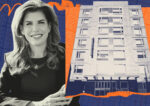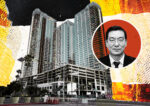
Trending
City of LA approves major DTLA, Hollywood zoning plans
New guidelines envision development of 135,000 housing units

After years of tweaks and deliberations, the L.A. City Council has signed off on two comprehensive zoning plans that together account for 135,000 new housing units over the next 20 years.
The council unanimously approved community plan updates for both Downtown L.A. and Hollywood in a meeting on Wednesday.
As the region faces an entrenched housing affordability crisis — and increasing political pressure to address it — the approvals signal the city’s desire for continued multifamily development and increased density in two of the city’s largest and most populous regions.
“This plan represents the most ambitious community plan in the history of our city,” Councilmember Kevin de León, who represents Downtown, said after the vote.
The DTLA plan accounts for the bulk of the allocated development. It allows up to 100,000 new units, which the city projects could add 175,000 residents, and expands the portion of Downtown land area where housing is permitted from 33 percent to 60 percent.
The blueprint also focuses on affordability concerns, including a requirement that all new multifamily projects include affordable units and an 80 percent affordability requirement for projects in Skid Row. Under different City of L.A. zoning incentives, such as the popular Transit Oriented Communities program, many new multifamily projects throughout the city already include some affordable units.
But the council approval also came after last minute tweaks to DTLA 2040 that critics argue weaken the housing plans.
In the days ahead of the vote, the Garment Worker Center, a union-allied group that advocates for the rights of Downtown’s tens of thousands of typically low-wage, immigrant garment workers, successfully campaigned for new restrictions on residential development in the Fashion District, including manufacturing space requirements, in an effort to protect garment jobs.
Business groups, however, have argued that the last-minute tweaks will effectively cut 12,000 of the planned 100,000 units because the requirements are too onerous for developers.
“These restrictions are infeasible due to real estate market, design and logistical considerations,” Nella McOsker, president of the Central City Association, wrote in a letter before the vote. “These requirements do not protect garment worker jobs but they do impede housing development.”
The Hollywood plan, which hadn’t been successfully updated for more than 30 years, accounts for 35,000 new housing units, and generally represents a continued push toward density in a part of L.A. that’s already undergoing rapid change.
The plan provides size incentives for multifamily projects in more urban areas, such as Sunset and Hollywood boulevards, where a lot of new projects have already appeared, if developers include affordable units. At the same time, it also rezones more than 300 acres in the Hollywood Hills — home to some of the city’s most expensive real estate — from residential use to non-developable open space.
Read more







